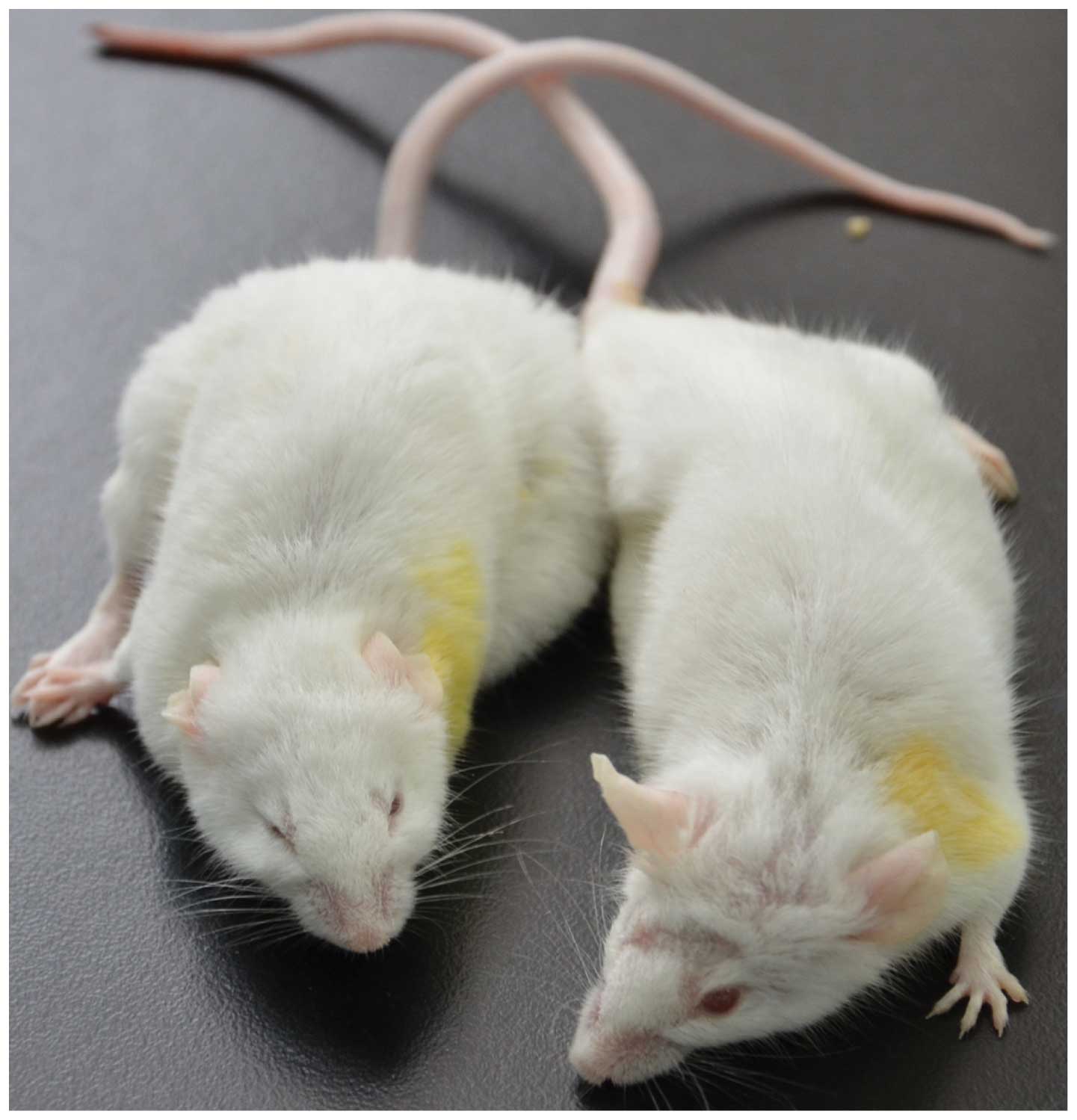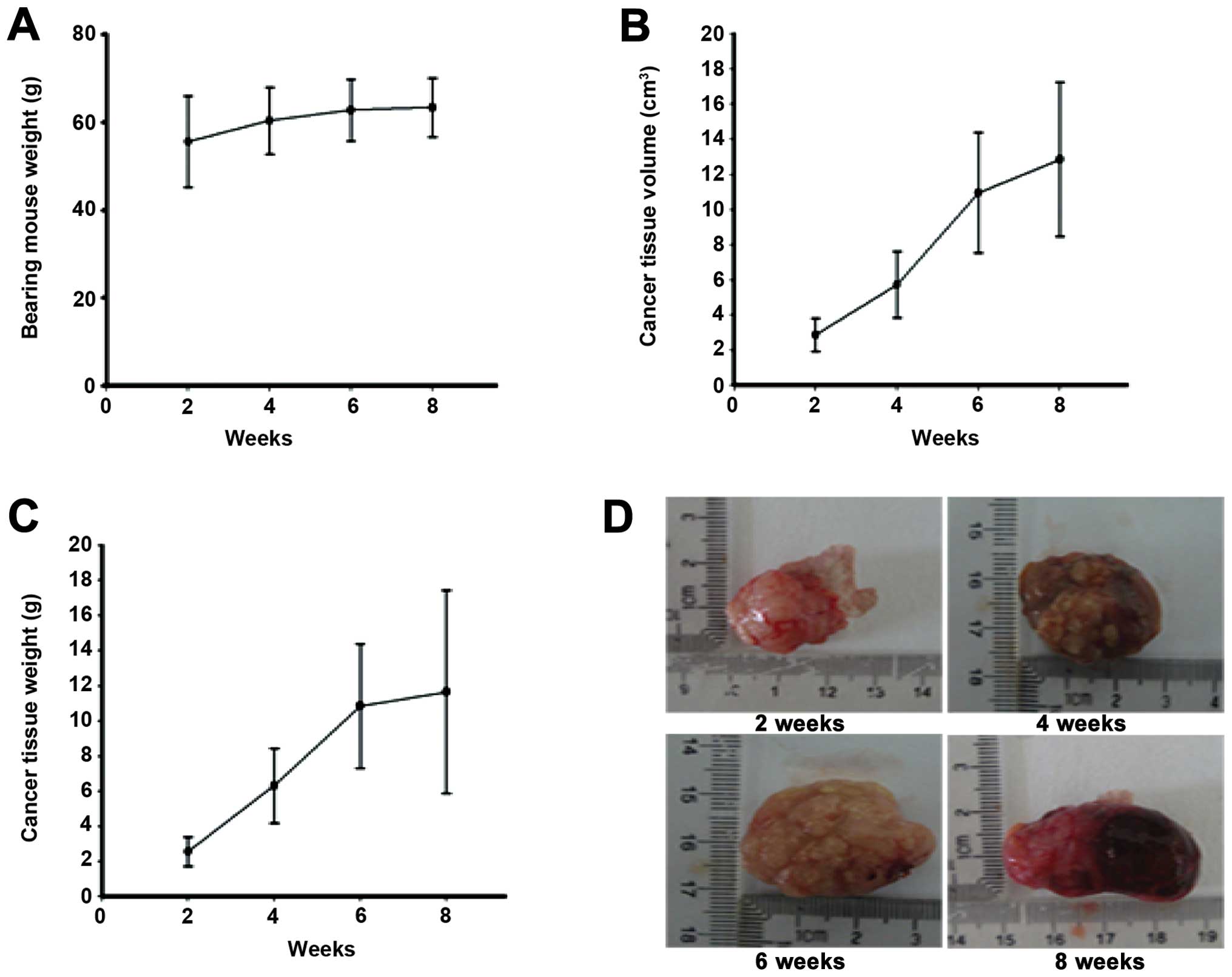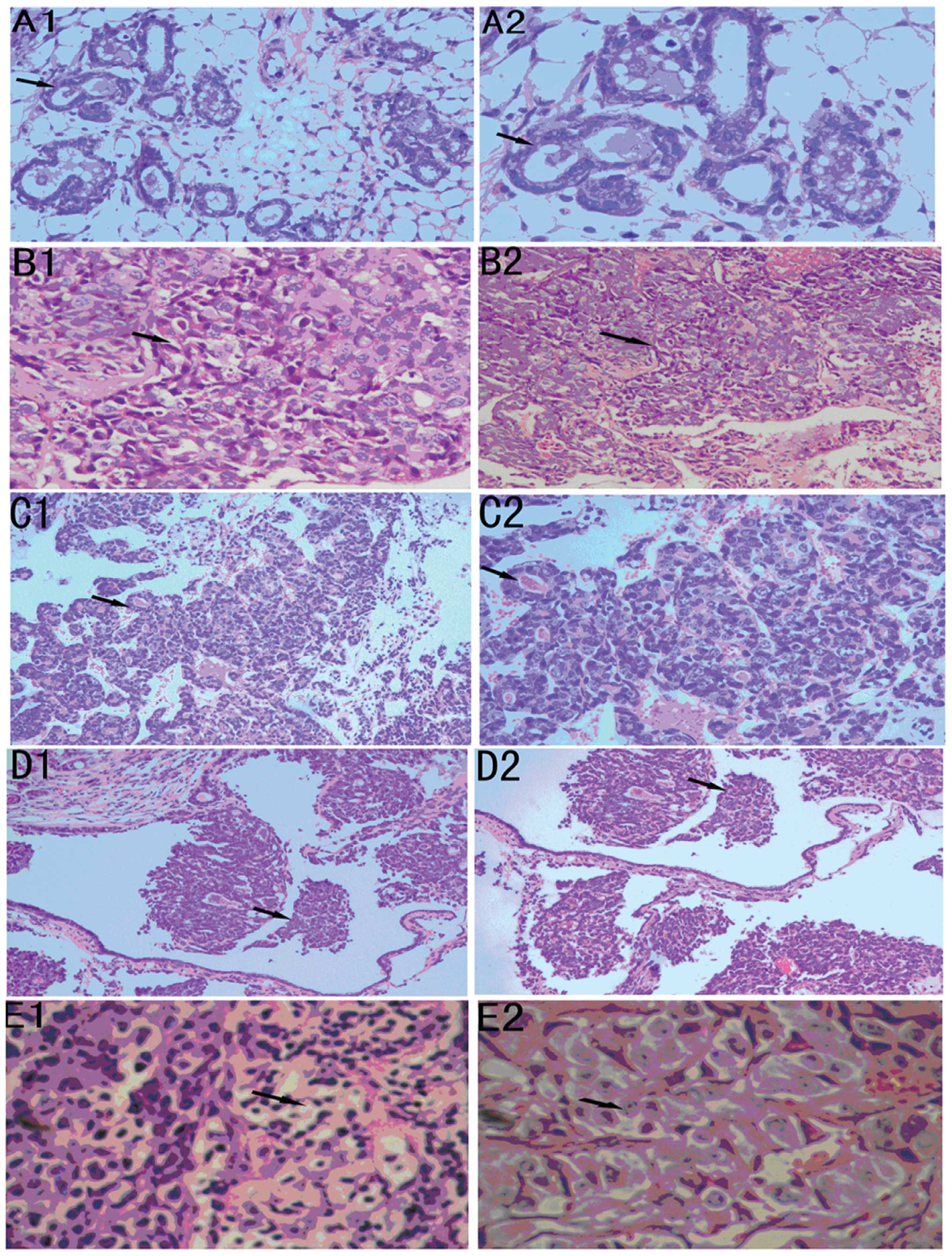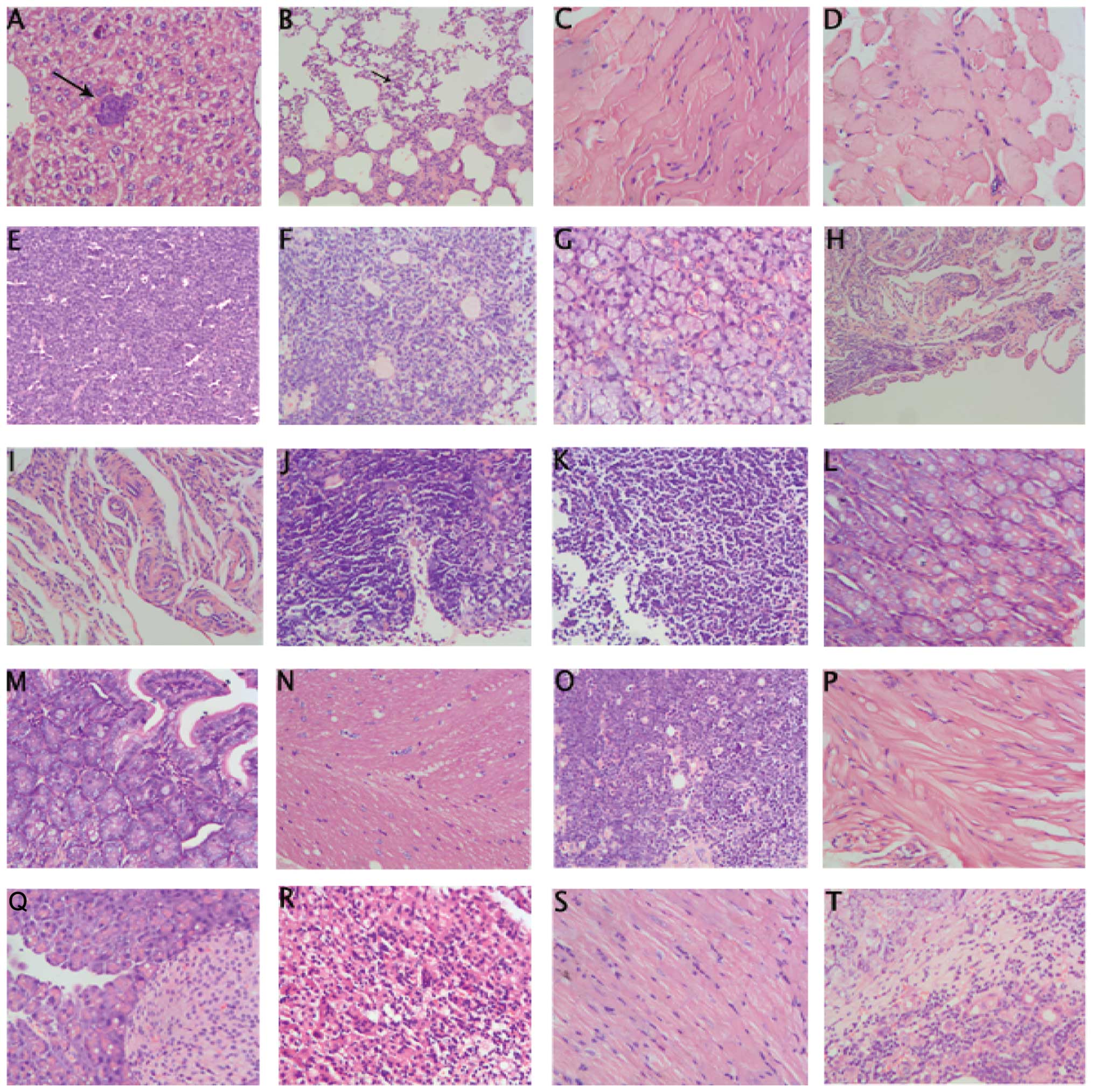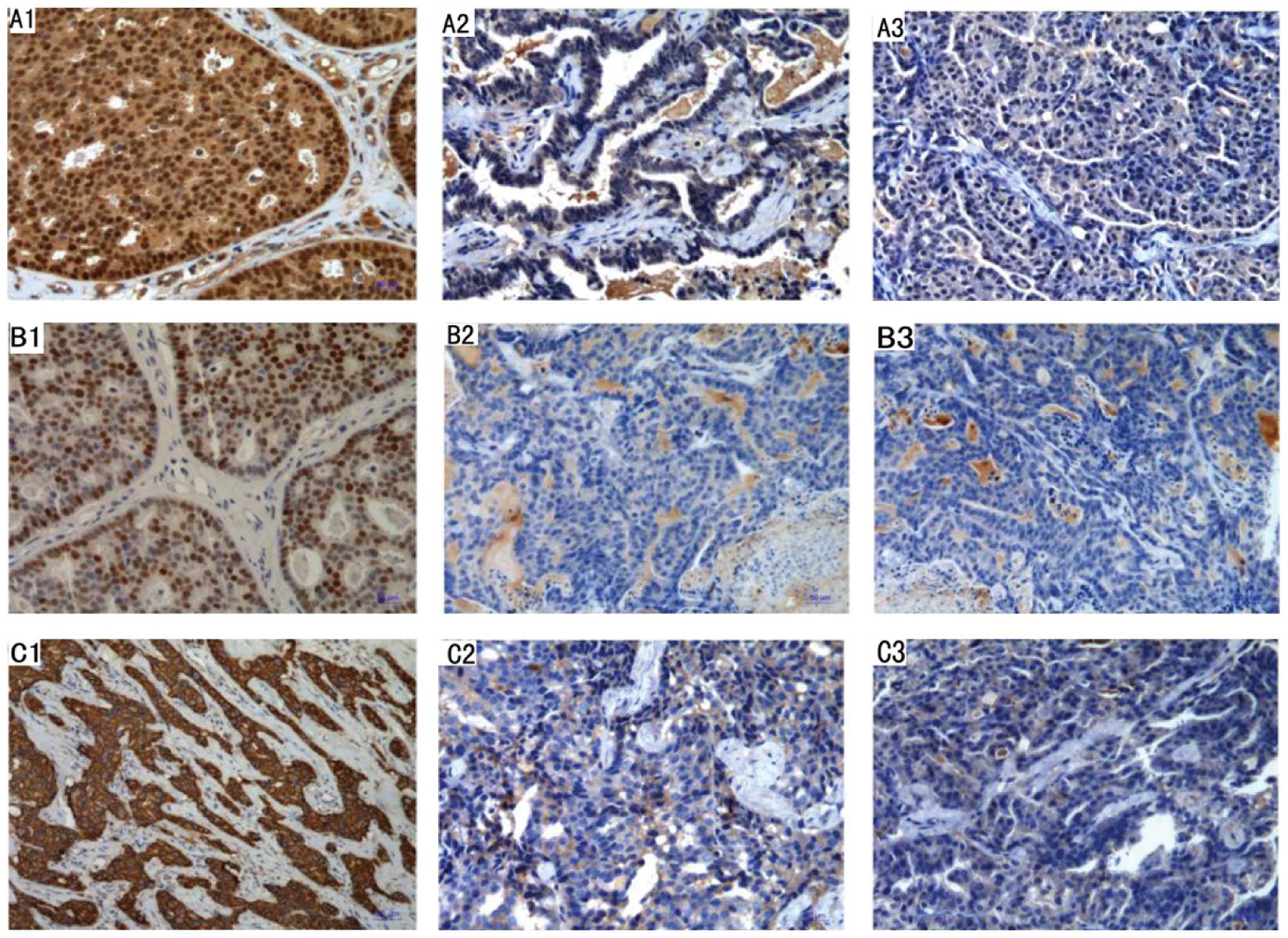|
1
|
Silber JH, Rosenbaum PR, Clark AS, et al:
Characteristics associated with differences in survival among black
and white women with breast cancer. JAMA. 310:389–397. 2013.
View Article : Google Scholar : PubMed/NCBI
|
|
2
|
Mahesh Kumar MJ, Ponvijay KS and Nandhini
R: A mouse model for luminal epithelial-like ER positive subtype of
human breast cancer. BMC Cancer. 7:180–189. 2007.PubMed/NCBI
|
|
3
|
Rostoker R, Bitton-Worms K, Caspi A, et
al: Investigating new therapeutic strategies targeting
hyperinsulinemia’s mitogenic effects in a female mouse breast
cancer model. Endocrinology. 154:1701–1710. 2013.
|
|
4
|
Pierpaoli E, Viola V, Barucca A, et al:
Effect of annatto-tocotrienols supplementation on the development
of mammary tumors in HER-2/neu transgenic mice. Carcinogenesis.
34:1352–1360. 2013. View Article : Google Scholar : PubMed/NCBI
|
|
5
|
Futakuchi M and Singh RK: Animal model for
mammary tumor growth in the bone microenvironment. Breast Cancer.
20:195–203. 2013. View Article : Google Scholar : PubMed/NCBI
|
|
6
|
Lin EY, Jones JG, Li P, et al: Progression
to malignancy in the polyoma middle T oncoprotein mouse breast
cancer model provides a reliable model for human diseases. Am J
Pathol. 163:2113–2126. 2003. View Article : Google Scholar : PubMed/NCBI
|
|
7
|
Dai Y, Cui J, Cun Y, et al:
Tetrahydrobiopterin ameliorates hepatic ischemia-reperfusion injury
by coupling with eNOS in mice. J Surg Res. 176:e65–e71. 2012.
View Article : Google Scholar : PubMed/NCBI
|
|
8
|
Lin Y, Wu D, Zeng WX, et al: Effect of
threonine on immunity and reproductive performance of male mice
infected with pseudorabies virus. Anima. 6:1821–1829. 2012.
View Article : Google Scholar : PubMed/NCBI
|
|
9
|
Wang W, Zheng H, Yang S, et al: Origin and
evolution of new exons in rodents. Genome Res. 15:1258–1264. 2005.
View Article : Google Scholar : PubMed/NCBI
|
|
10
|
Yu N, Yang J and Yin T: Extracts from a
traditional Chinese herbal remedy (Zhuyun recipe) improve
endometrial receptivity in mice with embryonic implantation
dysfunction and ovulatin stimulation. Ethnopharmacology.
137:389–395. 2011. View Article : Google Scholar
|
|
11
|
Ma P, Wu Y, Zeng Q, et al: Oxidative
damage induced by chlorpyrifos in the hepatic and renal tissue of
Kunming mice and the antioxidant role of vitamin E. Food Chem
Toxicol. 58:177–183. 2013. View Article : Google Scholar : PubMed/NCBI
|
|
12
|
Peng Q, Li RY, Jia B, et al: Sex control
by Zfy siRNA in the mouse. Theriogenology. 76:507–511. 2011.
View Article : Google Scholar : PubMed/NCBI
|
|
13
|
Fan Y, Huang ZY, Cao CC, et al: Genome of
the Chinese tree shrew. Nat Commun. 4:1426–1436. 2013. View Article : Google Scholar : PubMed/NCBI
|
|
14
|
Shi P, Zhang J, Yang H, et al: Adaptive
diversification of bitter taste receptor genes in mammalian
evolution. Mol Biol Evol. 20:805–814. 2003. View Article : Google Scholar : PubMed/NCBI
|
|
15
|
Wu X, Wang C, Katoh H, et al: Genetic
profile of LIBP/1 inbred strain derived from the Kunming outbred
stock of the mouse. Jikken Dobutsu. 41:541–543. 1992.(In
Japanese).
|
|
16
|
Zhang WV, Gong CM, Wei YL, et al: A new
way for inbred strain mice genetic monitoring and the discovery of
sex-linkaging RAPD markers. Shi Yan Sheng Wu Xue Bao. 29:59–69.
1996.(In Chinese).
|
|
17
|
Zheng LX, Liu HN, Qiao YD, et al:
Expression of vascular endothelial growth factor and Cyclin D3 gene
on Liu Wei Di Huang Pill in spontaneous breast cancer tissue. Chin
J Exp Trad Med Form. 11:117–119. 2010.
|
|
18
|
Zheng LX, Lin DM, Liu HN, et al: Mechanism
of nourishing Yin prescription inhibiting spontaneous breast cancer
grown by TGF-β signal pathway. Chin Trad Pat Med. 10:1793–1795.
2011.
|
|
19
|
Bouchalova K, Cizkova M, Cwiertka K, et
al: Triple negative breast cancer - current status and prospective
targeted treatment based on Her1 (EGFR), Top2A and C-MYC gene
assessment. Biomed Pap Med Fac Univ Palacky Olomouc Czech Repub.
153:13–17. 2009. View Article : Google Scholar : PubMed/NCBI
|
|
20
|
Ortiz AP, Frías O, Pérez J, et al: Breast
cancer molecular subtypes and survival in a hospital-based sample
in Puerto Rico. Cancer Med. 2:343–350. 2013. View Article : Google Scholar : PubMed/NCBI
|
|
21
|
Sørlie T, Perou CM, Tibshirani R, et al:
Gene expression patterns of breast carcinomas distinguish tumor
subclasses with clinical implications. Proc Natl Acad Sci USA.
98:10869–10874. 2001.PubMed/NCBI
|
|
22
|
Sørlie T, Tibshirani R, Parker J, et al:
Repeated observation of breast tumor subtypes in independent gene
expression data sets. Proc Natl Acad Sci USA. 100:8418–8423.
2003.PubMed/NCBI
|
|
23
|
Cornish BH, Thomas BJ, Ward LC, et al: A
new technique for the quantification of peripheral edema with
application in both unilateral and bilateral cases. Angiology.
53:41–47. 2002. View Article : Google Scholar : PubMed/NCBI
|
|
24
|
Laemmli C, Werlen C and van der Meer JR:
Mutation analysis of the different tfd genes for degradation of
chloroaromatic compounds in Ralstonia eutropha JMP134. Arch
Microbiol. 181:112–121. 2004. View Article : Google Scholar : PubMed/NCBI
|
|
25
|
Hermes GL and McClintock MK: Isolation and
the timing of mammary gland development, gonadarche, and ovarian
senescence: Implications for mammary tumor burden. Dev Psychobiol.
50:353–360. 2008. View Article : Google Scholar : PubMed/NCBI
|
|
26
|
Russo J and Russo IH: Atlas and histologic
classification of tumors of the rat mammary gland. J Mammary Gland
Biol Neoplasia. 5:187–200. 2000. View Article : Google Scholar : PubMed/NCBI
|
|
27
|
Hermes GL, Delgado B, Tretiakova M, et al:
Social isolation dysregulates endocrine and behavioral stress while
increasing malignant burden of spontaneous mammary tumors. Proc
Natl Acad Sci USA. 29:22393–22398. 2009. View Article : Google Scholar
|
|
28
|
Mallon E, Osin P, Nasiri N, Blain I, et
al: The basic pathology of human breast cancer. J Mammary Gland
Biol Neoplasia. 5:139–163. 2000. View Article : Google Scholar
|
|
29
|
Howard BA and Gusterson BA: Human breast
development. J Mammary Gland Biol Neoplasia. 5:119–137. 2000.
View Article : Google Scholar
|
|
30
|
Burrai GP, Mohammed SI, Miller MA, Marras
V, et al: Spontaneous feline mammary intraepithelial lesions as a
model for human estrogen receptor- and progesterone
receptor-negative breast lesions. BMC Cancer. 10:156–167. 2010.
View Article : Google Scholar
|
|
31
|
Munjal K, Ambaye A, Evans MF, et al:
Immunohistochemical analysis of ER, PR, Her2 and CK5/6 in
infiltrative breast carcinomas in Indian patients. Asian Pac J
Cancer Prev. 10:773–778. 2009.PubMed/NCBI
|
|
32
|
Adamczyk A, Niemiec J, Ambicka A, et al:
Expression of ER/PR/HER2, basal markers and adhesion molecules in
primary breast cancer and in lymph nodes metastases: a comparative
immunohistochemical analysis. Pol J Pathol. 63:228–234. 2012.
View Article : Google Scholar
|
|
33
|
Sutton LM, Han JS and Molberg KH:
Intratumoral expression level of epidermal growth factor receptor
and cytokeratin 5/6 is significantly associated with nodal and
distant metastases in patients with basal-like triple-negative
breast carcinoma. Am J Clin Pathol. 134:782–787. 2010. View Article : Google Scholar
|
|
34
|
Parkin DM, Bray F, Ferlay J, et al: Global
cancer statistics 2002. CA Cancer J Clin. 55:74–108. 2005.
View Article : Google Scholar
|
|
35
|
Kordon EC: MTV-induced pregnancy-dependent
mammary tumors: early history and new perspectives. J Mammary Gland
Biol Neoplasia. 13:289–297. 2008. View Article : Google Scholar : PubMed/NCBI
|
|
36
|
Giulianelli S, Vaqué JP, Soldati R, et al:
Estrogen receptor alpha mediates progestin-induced mammary tumor
growth by interacting with progesterone receptors at the cyclin
D1/Myc promoter. Cancer Res. 72:2416–2427. 2012. View Article : Google Scholar : PubMed/NCBI
|
|
37
|
Alles MC, Gardiner-Garden M, Nott DJ, et
al: Meta-analysis and gene set enrichment relative to er status
reveal elevated activity of MYC and E2F in the ‘basal’ breast
cancer subgroup. PLoS One. 4:e47102009.PubMed/NCBI
|
|
38
|
Chandriani S, Frengen E, Cowling VH, et
al: A core MYC gene expression signature is prominent in basal-like
breast cancer but only partially overlaps the core serum response.
PLoS One. 4:e66932009. View Article : Google Scholar : PubMed/NCBI
|
|
39
|
Horiuchi D, Kusdra L, Huskey NE,
Chandriani S, et al: MYC pathway activation in triple-negative
breast cancer is synthetic lethal with CDK inhibition. J Exp Med.
209:679–696. 2012. View Article : Google Scholar : PubMed/NCBI
|
|
40
|
Li Y, Chen H, Hardy TM and Tollefsbol TO:
Epigenetic regulation of multiple tumor-related genes leads to
suppression of breast tumorigenesis by dietary genistein. PLoS One.
8:e543692013. View Article : Google Scholar : PubMed/NCBI
|
|
41
|
Duncan JS, Whittle MC, Nakamura K, Abell
AN, Midland AA, Zawistowski JS, Johnson NL, et al: Dynamic
reprogramming of the kinome in response to targeted MEK inhibition
in triple-negative breast cancer. Cell. 149:307–321. 2012.
View Article : Google Scholar : PubMed/NCBI
|



